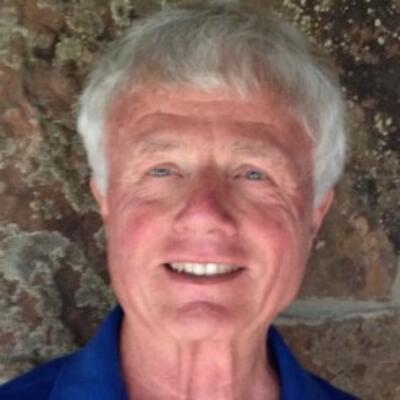In pursuit of the Great American Eclipse
Early on August 20 I loaded up my car with camping supplies, and my colleague Roger Taylor, with whom I worked for many years at the U.S. National Renewable Energy Laboratory, and I headed north to the small town of Alliance, Nebraska to experience the Great American Eclipse. A total solar eclipse of the sun is an event no one should miss, and on this day millions of Americans, along with visitors from many countries around the world, descended on cities and towns along the narrow 110-km-wide path of totality to experience this grand event. We arrived in Alliance later that day, set up a small tent on a farmer’s field, and prepared for this major natural phenomenon occurring on the next day.
This eclipse was unique in that it traveled from coast to coast, entering the state of Oregon in mid-morning and exiting South Carolina roughly two hours later. Paulette Middleton joined us for the eclipse early that morning of the 21st. We watched it with several thousand other people at a place outside of Alliance called “Carhenge”, an exact replica of Stonehenge in the UK, only with the structures made from old automobiles rather than giant stones (only in America could the ubiquitous automobile be honored in such a strange way!). Although the morning started off with low clouds and fog, by mid-morning the clouds had mostly cleared away. The moon began to darken the sun at 10:30 am, and the anticipation among all of us there to witness the event began to grow. Eighty minutes later a dark shadow raced toward us from the west. As the shadow passed overhead, we observed the “diamond ring” as the last of the sun was completely covered by the moon. For over two minutes we had a stunning view of the sun’s corona, and the ring of fire around the edge of the moon. The temperature dropped dramatically; many of us put on sweaters and jackets, even though it had been nearly 30°C just moments earlier. Despite the darkness overhead, and the appearance of stars, a strange reddish twilight could be seen around the entire horizon. We watched in awe, some shouting, some observing in silence, but all feeling strangely close to each other as we witnessed this incredible and mystical event.
Then, suddenly, there was the diamond on the ring again, the dark shadow quickly moved east, and we could no longer watch with the naked eye. Totality was over and the corona disappeared. But the emotional experience of witnessing a total solar eclipse can stay with you for a long, long time.
Of course, the timing and location of all solar eclipses far into the future can be predicted precisely, unlike other natural events that occurred that same week: the tragic and devastating south Asian monsoon-induced floods, and the tragic and costly impact of Hurricane Harvey on the U.S. Gulf Coast region. Journalists will inevitably refer to these events as “natural disasters”, but as the writer Ilan Kelman pointed out in an opinion piece this past Monday, the events are natural; it is society that turns them into disasters. We can likely attribute some of the severest impacts of these events to climate change, since warmer waters release more moisture to the atmosphere, providing an increasingly higher supply of energy to fuel these storms. But as Kelman points out, as our population continues to grow, and with more and more people moving into fragile and vulnerable flood zones and wetlands or along steep mountain slopes, it is society itself that creates the disasters resulting from these natural events, albeit amplified by the effects of a changing climate.
An eclipse is highly predictable, thanks to our precise knowledge of the relative motions of celestial bodies for centuries to come. Although predicting the timing, location and intensity of major storm events can baffle even the best forecasters, significant life- and property-saving strides in predicting the movement and strength of these events has been made over the past few decades. Too many politicians still need to recognize this. Politicians may take for granted the ability of science to establish precisely when and where the next solar eclipse will occur, but many politicians are still defying the scientific community by ignoring the risks of population growth in vulnerable areas, and the additional risks posed by climate change.
The scientific community provides the necessary skills, tools and information to allow politicians to make effective decisions that provide long-term security and safety to the populations they are supposed to be representing. Scientific knowledge has certainly advanced to the point where society should understand the risk they put themselves into when they settle in vulnerable areas such as low-lying coastal regions, flood zones, and steep mountain slopes. The fact that some uncertainty still exists in weather-related scientific predictions still does not outweigh the costs and risks for not taking action; it is said that for every dollar we refuse to apply to mitigate disasters before they occur, we spend ten dollars in relief after disasters occur.
Politicians need to acknowledge unanimously that better policies must be established to discourage practices that place society at further risk, and to support the necessary up-front investments and policy frameworks to mitigate these risks.
Best regards,
Dr. David Renne, President
International Solar Energy Society
